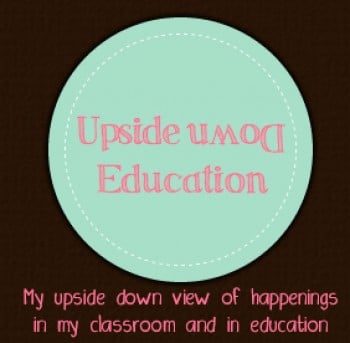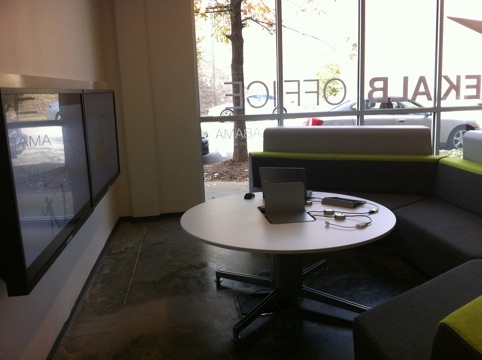So often we get on the soap box about “no desk in rows” or “no sage on stage” when talking about classrooms. Yet our classrooms are mostly supplied with 2 things: desks and boards in the front of the room. Maybe we get a table or chair or two but that is it. Then we are left to move these around as we see fit, but usually the best fit of all the furniture is rows of desks. Designers of schools are not educators and furniture salespeople aren’t either. Collaboration is not anywhere in the minds of there people. Their school experience was probably desk and chalkboard so why would they think differently? Last week I was able to visit an Education Environment Symposium at Dekalb Office. Dekalb sells school furniture and I really went in there expecting to see “desks.” But I was wrong!
Ed Roy who works for a company called Steelcase that makes furniture was the first to present. He immediately began to discuss pedagogy, learning, and teaching styles. I was actually shocked to hear this. His world revolved around furniture and his presentation kept going back to importance of collaboration in a classroom. He spoke about flipped classrooms, backchanneling, and learning from each other. He kept saying that classes that are completely based on just lectures were not meeting needs of all students. This presentation focused mostly on things we as educators focus on often. Sometimes on twitter it seems we almost beat these ideas into the ground. But it did not take me long to realize I was the only one from the K-12 area in the presentation. The others were from area Higher-Ed institutions (non edu depts), designers, or architects, people who probably don’t hear this everyday. Not only do they not here it, they never really even thought about it.
He had some great ideas about how the learning environments will change the dynamics of the classroom as well as the school. Some spaces he shared were:
- lecturer is set up in center of the room with all walls having screens, the view of projectors can be seen at any angle.
- classrooms have hubs set up through the room where students can project from one laptop but also have numerous white boards (the marker kind!) for brainstorming and collaboration.
- lecture halls that were surrounded by spaces for breakout rooms
- lecture halls where the tables can immediately be turned into areas for collaboration
- spaces for outside a classroom where students can sit on couches, can plug in computers/iPads and project them onto TVs (see picture)
- school buildings where the entrance is full of collaboration spaces and professors have to walk through the spaces to offices and lecture halls
I left there with a great understanding of how these collaboration spaces can change learning and which spaces are more effective. Also I loved how most of these spaces still allowed for whole group learning with projection around the classroom and desks or tables that quickly moved. I sat there mostly daydreaming of how wonderful these spaces would be in my classroom or if I ever was in charge of a school. (you are more than welcome to buy and donate any of these products to my classroom!)

